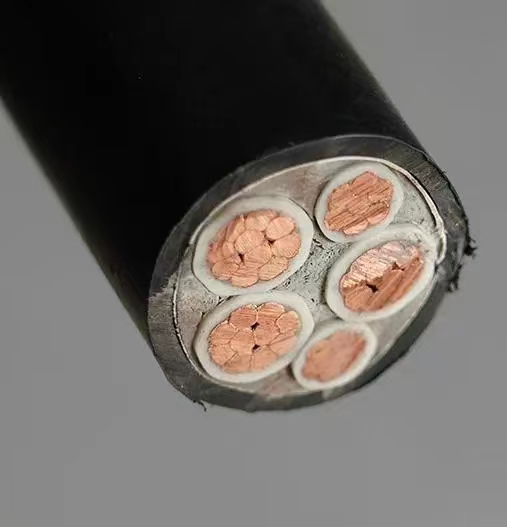The 70-year long life cable is suitable for all places with dense population, such as shopping malls, theaters, stations, airports and other public places, as well as important distribution lines, building wiring, home decoration, etc.
The service life of this product is not less than 70 years at an average operating temperature of 70°C. The long-term allowable operating temperature of the cable conductor is 90°C, 105°C, and 125°C; the maximum operating temperature during short circuit (maximum duration 5S) is 250°C.
The cable insulation layer adopts a radiation cross-linked double-layer insulation structure. The inner insulation meets the electrical insulation performance, the outer insulation meets the flame retardant performance, and the inner and outer layers simultaneously meet the high life performance.
The reasons and advantages of using radiation cross-linking for insulation (compared with ordinary PVC): Traditional PVC material has poor thermal stability.
It becomes hard and brittle at low temperatures, and easily softens and relaxes at high temperatures. It has poor impact resistance and aging resistance, easily releases harmful gases at high temperatures, and easily drops harmful substances during production and use, causing adverse effects on humans and the environment.
Radiation cross-linking uses high-energy electron beams generated by electron accelerators to transform the original chain-like molecular structure into a three-dimensional network molecular structure to form cross-links.
The three-dimensional network molecular structure has good thermal stability, and the insulation, electrical and mechanical properties are improved. Substantial improvement.
The main performance advantages are as follows
The cable life is synchronized with the building: 70 years. Due to the high temperature resistance level and high aging temperature of the irradiation cross-linked insulation, the service life of the cable that generates heat during use is extended.
Large carrying capacity: irradiation cross-linked cable increases from non-cross-linked 70°C to 90°C, 105°C, and 125°C.
Large insulation resistance: Since radiation cross-linking avoids the use of hydroxide as a flame retardant, it prevents pre-cross-linking during cross-linking and the decrease in insulation resistance due to the absorption of moisture in the air by the insulation layer. This ensures the insulation resistance value.
Stable product quality: The quality of traditional silane cross-linked cables (commonly known as warm water cables) is affected by water temperature, extrusion process, cross-linking additives and other factors, and the quality is unstable, while the quality of irradiation cross-linked cables depends on the electron beam. The irradiation dose is controlled by computer, which reduces human factors, so the quality is stable.
High flame retardant: High flame retardant materials are used, and ZA, ZB, ZC, and cables can be designed according to customer needs. The flame retardant performance has passed the combustion test specified in GB/T 1966-2005.
Halogen-free, low toxicity, low smoke: the minimum light transmittance of first-class flame-retardant wires and first-class fire-resistant wires is not less than 80%, and the minimum light transmittance of other wires when burning is not less than 60%.The acidity PH value of the combustion gas shall not be less than 4.3, and the conductivity shall not be greater than 10us/mm.
Post time: Apr-17-2024





